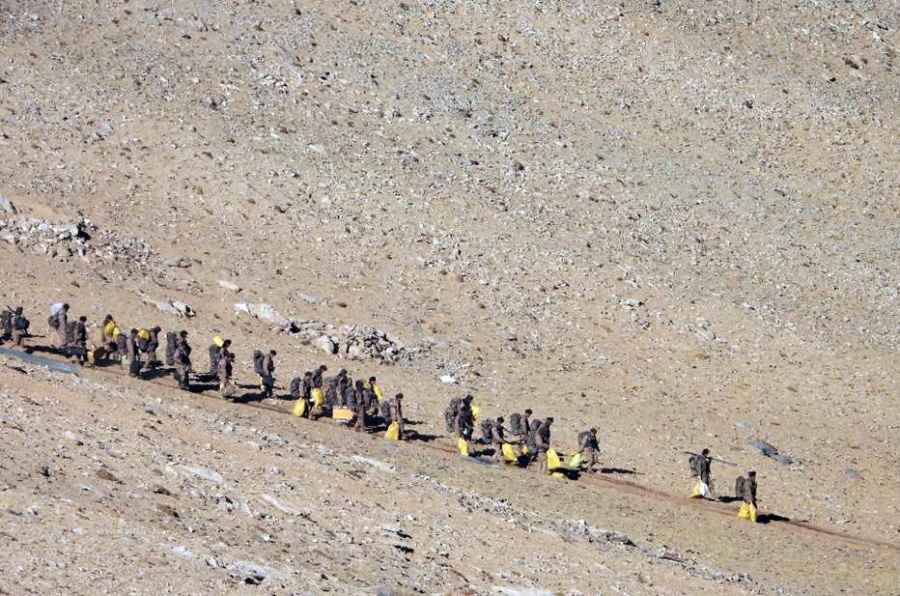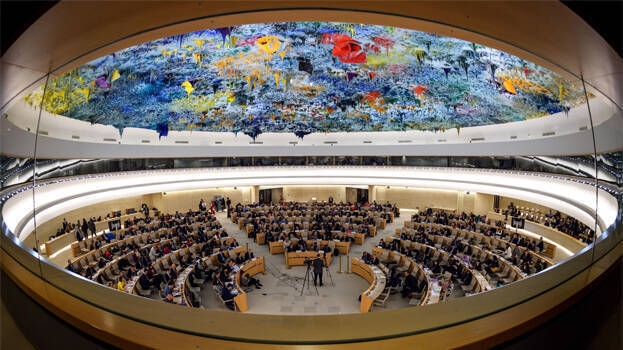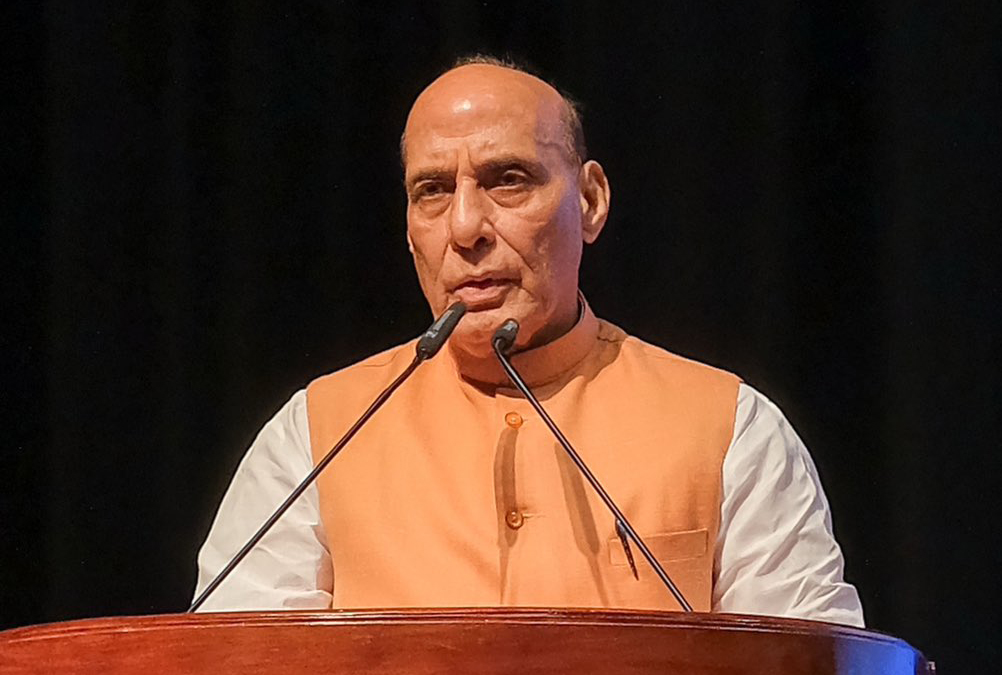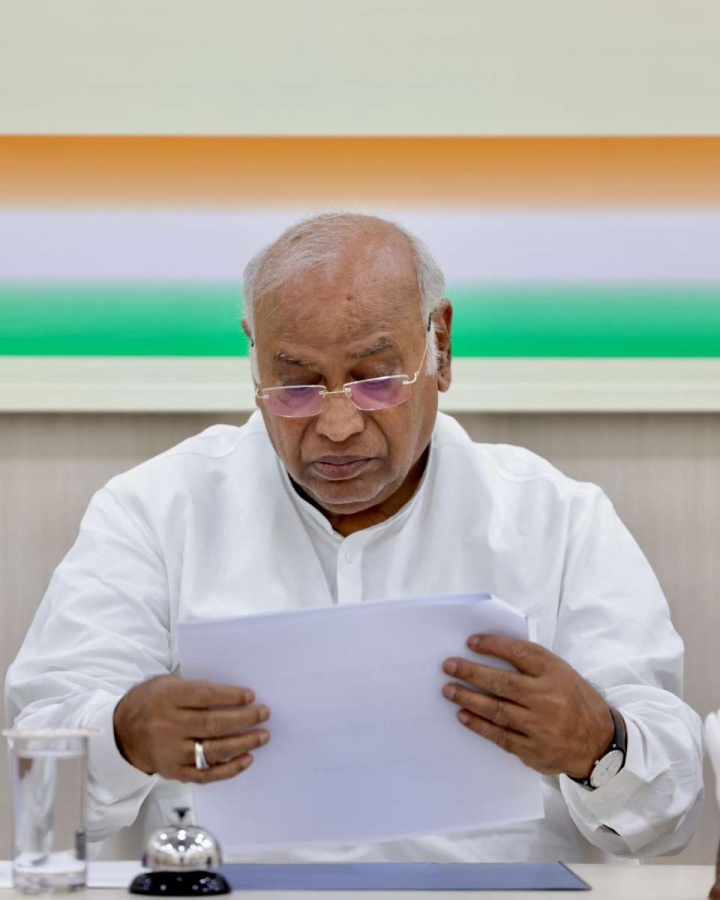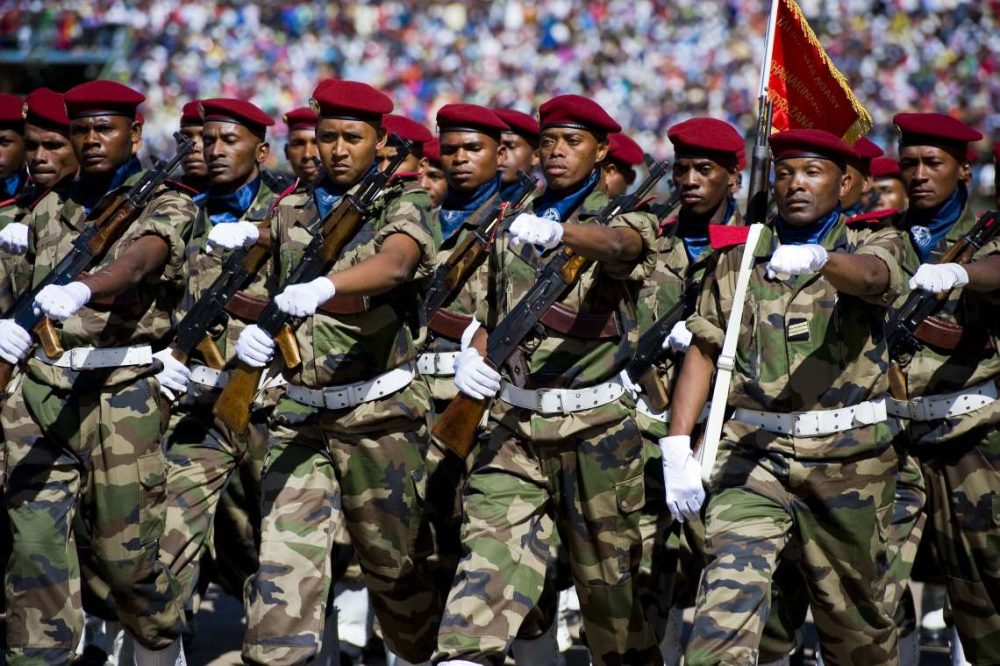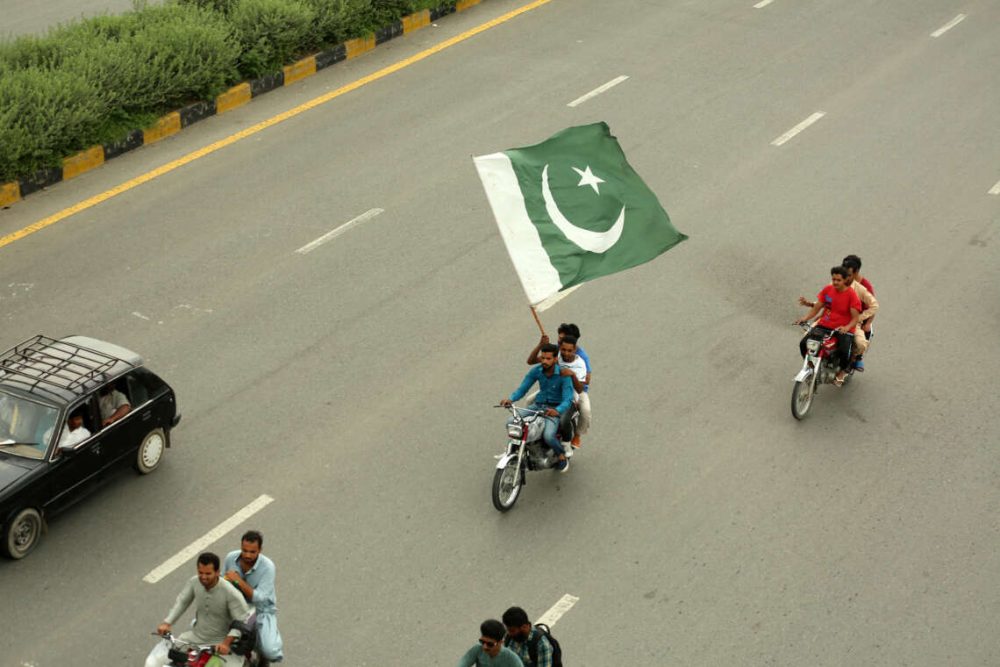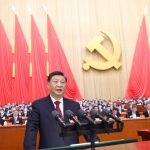The satellite images, captured on October 9 by US-based Maxar Technologies, show rapid construction over an area of about 17 hectares….reports Asian Lite News
As India and China continue diplomatic efforts to ease tensions along the border, recent satellite imagery reviewed by India Today reveals the ongoing construction of a large Chinese settlement near the north bank of Pangong Tso Lake.
The settlement is located approximately 38 kilometres east of one of the 2020 standoff points between Indian and Chinese forces, though it lies outside India’s territorial claims. Pangong Tso, the world’s highest saltwater lake, straddles India, China-administered Tibet, and the disputed border between them.
The satellite images, captured on October 9 by US-based Maxar Technologies, show rapid construction over an area of about 17 hectares. Situated near Yemagou Road at an elevation of 4,347 meters, the site is bustling with construction and earth-moving machinery. According to Y Nithiyanandam, Professor & Head of the Geospatial Research Programme at the Takshashila Institution, “More than 100 buildings, including residential structures and larger administrative buildings, are being built. Open spaces and flattened land suggest possible future use for parks or sports facilities.”
He also pointed out a 150-meter-long rectangular strip in the southeast corner, speculating it could be prepared for helicopter operations.
Analysis of open-source satellite imagery indicates that construction began in early April 2024 on a riverbed sloping towards the lake. The settlement appears to be divided into two parts, possibly distinguishing between administrative and operational zones, according to military sources.
Shadow analysis of the structures reveals a mix of single and double-story buildings, with smaller hutments nearby, likely accommodating six to eight people each. Two larger structures may serve as administration and storage facilities. The layout, designed in staggered rows rather than straight lines, suggests an intention to reduce vulnerability to long-range attacks.
The settlement’s location behind high peaks further enhances its strategic advantage, limiting visibility from nearby areas. “The surrounding high peaks obscure the site from land-based surveillance equipment,” Nithiyanandam noted. Military sources speculate that if used for military purposes, the settlement could function as an “ad-hoc forward base,” reducing reaction times for Chinese forces.
Nature Desai, an observer of the Indo-Tibetan frontier, offers another interpretation. He suggests that the settlement could be intended for Tibetan nomads, identifying the site as Changzun Nuru, a historic campsite mentioned in Swedish geographer Sven Hedin’s Central Asia Atlas: Memoir on Maps. Desai argues that the design is more consistent with the style of permanent housing built for Tibetan nomads by the Chinese government over the past two decades, rather than typical Xiaokang-style border defence villages.
If so, this would be the first such settlement close in the area, reflecting China’s ongoing efforts to settle Tibetan nomads permanently. China could frame this development as “a long-awaited gift to its loyal nomads along the Indian frontier,” Desai noted.
Nithiyanandam pointed out that while the proximity to a water source likely resolves water supply issues, the settlement’s energy needs will likely rely on renewable sources. The rapid pace of construction suggests that residential buildings are nearing completion, and significant progress has been made over the past six months. However, the settlement’s completion timeline could be impacted by extreme weather conditions in the coming months.
ALSO READ: Omar to take oath as J&K CM on Oct 16


